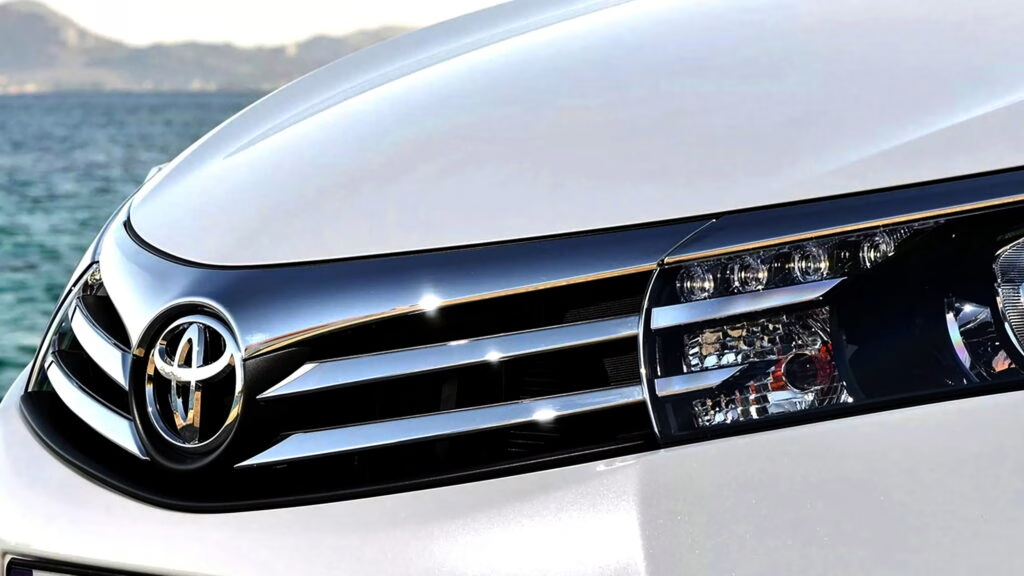Why Are Australian Toyota Corolla Owners Taking Legal Action Over White Paint?
If you own a white Toyota Corolla in Australia—especially one built between mid-2010 and late 2014—you might have noticed something troubling: the paint on your car could be peeling, flaking, or even coming off in sheets after a few years in the sun. You’re not alone. Hundreds, possibly thousands, of Corolla owners are banding together in a class action lawsuit, claiming Toyota’s factory-applied 040 white paint isn’t holding up to Australia’s harsh climate.
What’s Actually Happening to the Paint?
The core of the issue is that the white paint—marketed under names like Glacier White, Super White, and Super White II—starts to degrade when exposed to sunlight and UV rays. Over time, the bond between the paint’s primer and the metal body weakens, leading to peeling and bubbling. Some owners have reported that their cars need a complete respray just to look presentable again.
This isn’t just a cosmetic problem. Peeling paint can expose the metal underneath, making it vulnerable to rust and further damage. For many, it’s a frustrating and costly surprise, especially since Toyota is known for reliability and durability.
How Widespread Is the Problem?
While the exact number of affected vehicles is still unclear, the issue is far from isolated. There’s a Facebook group dedicated to Toyota paint peeling in Australia with over 7,000 members. Anecdotes from owners describe everything from minor flaking on the roof to entire panels losing their paint after a few summers. The common thread? All these cars were painted with the same 040 white code during the 2010-2014 production window.
What Is the Lawsuit Claiming?
The class action, led by William Roberts Lawyers, argues that Toyota’s paint fails to meet the “acceptable quality” standard required by Australian Consumer Law. The suit isn’t just about the cost of repainting—owners are seeking compensation for diminished resale value, financial loss, and the emotional stress of dealing with a car that looks years older than it should.
One of the more serious allegations is that Toyota didn’t warn buyers about the risk, even though the company reportedly knew sunlight could degrade the paint’s adhesion. In fact, Toyota Australia acknowledged in 2022 that UV exposure can cause the primer to separate from the metal, leading to peeling. But for many owners, that admission came too late.
How Has Toyota Responded?
Toyota Australia has denied the claims and says it will “defend the claims vigorously.” The company did issue a statement in 2022 confirming the technical details of the paint problem, but it hasn’t offered a blanket fix or compensation for all affected owners. Instead, responses have varied case by case, leaving many drivers feeling stuck.
For those joining the lawsuit, there’s some reassurance: litigation funder Omni Bridgeway is backing the case on a “no win, no pay” basis, so owners can participate without upfront legal costs.
What Does This Mean for Resale Value and Repairs?
Let’s be blunt—peeling paint can tank your car’s resale value. Used car buyers are wary of cosmetic issues, especially when they hint at deeper problems or expensive repairs. A full respray can cost anywhere from $3,000 to $10,000 AUD, depending on the quality and extent of the work. That’s a hefty bill for a car that’s otherwise mechanically sound.
Some insurance policies might cover paint defects, but many don’t, especially if the issue is deemed a manufacturing fault rather than accidental damage. For owners, the options are limited: pay for a respray, hope for a legal win, or accept a lower trade-in price.
Is This Just a Toyota Problem?
Paint defects aren’t unique to Toyota, but the scale and specifics of this issue have made it a hot topic. Australia’s intense sun and high UV index are notorious for testing the limits of automotive finishes. According to the Australian Radiation Protection and Nuclear Safety Agency, UV levels in many parts of the country are among the highest in the world—meaning any weakness in paint formulation is likely to show up fast.
That said, most modern cars are designed with these conditions in mind. When a widespread defect emerges, it raises questions about quality control and transparency from manufacturers.
What Should Affected Owners Do Next?
If you own a 2010-2014 white Toyota Corolla and are seeing signs of paint failure, it’s worth documenting the problem with photos and repair estimates. Check if your car’s VIN matches the affected batch and consider joining the class action if you haven’t already. Even if you’re not keen on legal battles, being part of a group can help amplify your voice and improve the odds of a fair outcome.
In the meantime, parking in the shade, using a car cover, and regular waxing can slow down further damage—but let’s be real, these are band-aids, not cures.
The big takeaway? Car ownership isn’t about perfection—it’s about smarter adjustments. Start with one change this week, and you’ll likely spot the difference by month’s end. Whether that’s joining a support group, calling your dealer, or just keeping your car out of the midday sun, a little action now can save a lot of headaches later.

